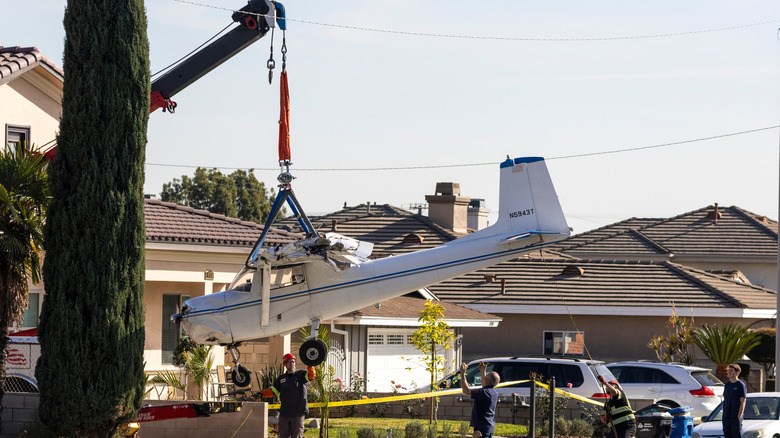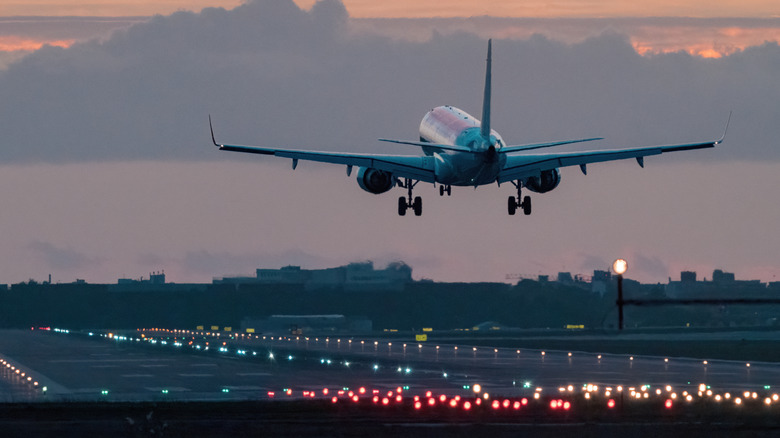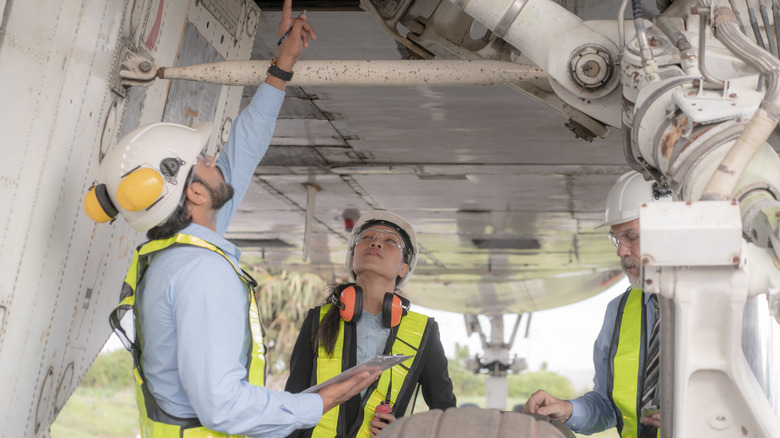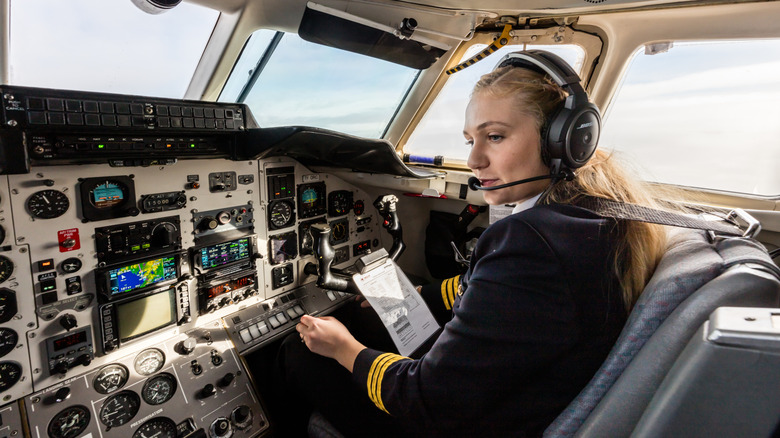How Common Are Plane Crashes (On Average) In 2025?
The aviation industry had a turbulent start to 2025 with the D.C. area helicopter and plane crash on January 29 that killed 67 people. The accident happened when American Airlines Flight 5342 from Wichita, Kansas on approach to Ronald Reagan airport in Arlington, Virginia collided with an Army Black Hawk helicopter that was part of an emergency evacuation drill. The 60 passengers and four crew members on the plane as well as the three soldiers on the helicopter all died in the crash.
Just two days later, on January 31, a medical transport plane crashed soon after taking off from Northeast Philadelphia Airport, killing six people on board and another person on the ground. Another major incident occurred on February 6, 2025, when an overloaded Cessna 208B crashed near Nome, Alaska, killing all 10 people on board.
The first two months of the year were extremely brutal for U.S. aviation, as 99 of the 122 people killed in airplane accidents were involved in crashes over American soil. March and April brought an additional 63 crash-related deaths worldwide, bringing the total to 185. However, aviation accidents have been in the news since late last year. On December 29, 2024, Jeju Air flight 2216 overshot a runway at Muan International Airport in South Korea and crashed into a concrete structure, killing 179 out of the 181 people on board. A few days earlier on December 25, 38 people died when an Azerbaijan Airlines plane crashed near Aktau, Kazakhstan after being diverted from Grozny in southern Russia. But the deadly aviation accidents from late 2024 and early 2025 are notable outliers in U.S. aviation history. In fact, the plane/helicopter crash at Reagan Airport was the first fatal airline accident in the nation since 2009, and the deadliest since 2001.
NTSB investigations are down compared to 2010-2019
From January to April 2024, there were 146 deaths around the globe from 68 plane crashes, according to NTSB (National Transportation Safety Board) data. The same period in 2025 has seen 185 casualties in 63 such accidents. While the number of deaths has gone up significantly, that is primarily due to the D.C. plane crash. As commercial airplane accidents have become rarer, one large fatal crash can create the impression that aviation safety has taken a big hit. Logging crashes and near-misses is just a small part of what the NTSB does, and looking at the organization's total number of safety-related investigations paints a different picture.
The NTSB conducted 171 aviation investigations in the first quarter of 2025, down from 185 investigations during the first three months of 2024. Both those figures are a steep drop from 2010 to 2019, when the first quarter saw an average of 215 NTSB investigations. Recency bias is certainly at play in making aviation safety a concern in the forefront of travelers' minds these days. Bird strikes can take out the engines of large jet airliners, although major bird strike incidents are rare. But after a high-profile incident where Captain Chesley "Sully" Sullenberger safely landed a plane in the Hudson River after a bird strike, the phenomenon was a topic of chatter in airport lounges and on social media apps everywhere. A similar groupthink mentality may be making some travelers nervous after the major crashes early in 2025. While aviation accidents are tragic for victims, families, first responders, and investigators, they are pivotal to improvements in aviation safety over time.
Aviation accidents lead to safer flights
In the United States, investigation of aviation incidents is the domain of the NTSB and Federal Aviation Administration (FAA). Their findings are then used to improve regulations and policies, but the NTSB and FAA don't just step in when someone dies in a plane crash. In 2021, The FAA fined Boeing $17 million over design problems with the 787 Dreamliner, some of which were potential safety concerns. The FAA has also lends its expertise to investigating aviation accidents abroad, in turn learning lessons it applies to domestic flights.
On March 27, 1977, two 747s collided on a foggy runway at Tenerife North Airport, killing over 580 people, including passengers and crew. The accident happened due to a series of miscommunications between the pilots and air traffic controllers at the single-strip airfield in the Canary Islands, which was overwhelmed with traffic due to the closure of nearby Las Palmas Airport. After investigating the incident along with Spanish authorities, the FAA standardized communication terminology for pilots and air traffic controllers and improved runway lighting.
Flying commercially is safer than ever before
Another major incident that transformed aviation safety came when Air France flight 447 from Rio to Paris crashed in the Atlantic on June 1, 2009. It encountered a thunderstorm soon after departure, prompting pilots to take manual control of the plane. The plane's speed sensors then failed, and the pilots were unable to react appropriately and lost control of the aircraft. It fell 38,000 feet and crashed into the ocean off the coast of Brazil, killing all 228 people aboard. Air France and Airbus had to answer for the incident in French court, and the FAA updated standards for airplane instruments and pilot training.
While many of the most recent aviation accidents are still under investigation, it's expected that changes to policy, technology, and regulations are forthcoming to help avoid incidents like the notable ones in the U.S. during early 2025. Commercial flight has been steadily becoming safer over the past few decades, thanks to the information learned from previous incidents and investigations. The NTSB noted a peak of 9.08 incidents for every 100,000 commercial flight hours in 1994, but that was down to 6.84 by 2007. Despite the two large incidents early in 2025, the incident rate was just 3.19 per 100,000 hours of flight for the six-month period from October 2024 through March 2025. This means that despite the two well-reported crashes in the Northeast United States in the early months of 2025, flying commercially is in fact safer than it's been in years. Pilot and Cranfield University instructor Guy Gratton told CNN that the DC crash was an "aberration" and observed, "Obviously the systems broke down." He pointed out that international agencies would quickly act to prevent similar incidents in the future, noting that "the simple fact that that happens is why aviation is so safe."



